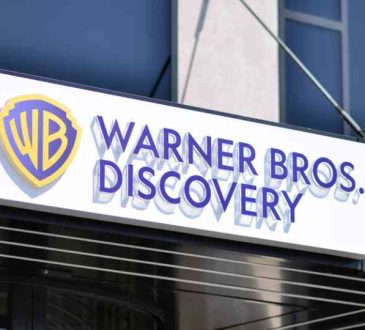Resiliency 2.0: Tell Me How Resilient You Are

The World is a Riskier Place: As the COVID-19 pandemic brought unparalleled disruptions to global, national and local supply chains across nearly every industry, supply chain resilience has catapulted to the top of the C-suite agenda where 93% of CEO’s are rethinking their supply chain operating models to become more resilient, responsive and agile.1 And for good reasons. Disruptions erase approximately half a year’s worth of profits every ten years and occur every 3.7 years lasting more than a month on average1, increasing the urgency of CEOs, boards of directors and investors — not just operations leaders. The risk facing supply chains reflect the level of exposure to different types of shocks including financial crises, terrorism, cyber attacks, military action, extreme weather, and, unfortunately future pandemics. These are not distant future risks — they are current, ongoing patterns. Previously, most supply chains were built to be just-in-time, not just-in-case. It’s clear we now operate in a different environment.
An organization’s supply chain operations can be a source of vulnerability or resilience, depending on the management team. With risks circling all around, how can a CEO protect its company from supply chain disruptions? CEO’s along a supply chain need to respond quickly when a shock hits. In effect, be resilient themselves. Like a virus, shocks inevitably exploit the weakest point along the supply chain — or more accurately, the least resilient manager who contributes to a bottleneck by failing to deliver what the customer wants. It comes down to people where social technology has a greater impact on supply chain performance than digital technology. A few questions need to be addressed to accomplish this:
- How can a CEO add resilience metrics?
- How are CEO’s held accountable and incentivized for building resilience?
- How does a CEO answer the question, “Am I more resilient now than I was a year ago?”
Ignoring these questions comes with significant consequences because customers are beginning to ask another question, “Tell me how resilient you are.”
Awareness is Not Preparedness
Historically, managers have undervalued what’s at stake when a supply chain shock occurs by failing to acknowledge their exposure, vulnerabilities, and potential losses. Supply chain shocks result from more than just a run of bad luck. For example, changes in the environment and in the global economy are increasing the frequency and magnitude of shocks. Forty weather disasters in 2019 caused damages exceeding $1B each, and in recent years the economic toll caused by the most extreme events has been escalating.2 As a new multi-polar world takes shape, we are seeing more trade disputes, higher tariffs, and broader geopolitical uncertainty, including the United States. The share of global trade conducted with countries ranked in the bottom half of the world for political stability, as assessed by the World Bank, rose from 16% in 2000 to 29% in 2018. No coincidence, almost 80% of trade involves nations with declining political stability scores.3 The increased reliance on digital systems increases exposure to a wide variety of cyberattacks where the number of new ransomware attacks alone doubled from 2018 to 2019.4 Obviously, this includes digital resilience as well. Bottom line, the effects of a supply chain shock ranges from millions of dollars to tens of trillions of dollars stretching from a 1-2 week disruption every two years to more than a two month disruption every five years. What we don’t know is how quickly ripple effects travel across a supply chain. It’s not a question of if, but when.
Social Technology
If the people part isn’t right, the tech part won’t be right. Judgment cannot be replaced by an algorithm. Only humans can create a method and acceptable thresholds to separate real issues from the noise. Only humans can decide which decisions can be put on autopilot, and which are to be managed by the planning and execution systems. Only humans can set a decision-making frequency that aligns with a company’s overall vision for this new way of working. Only humans can revisit roles and decision-making protocols when boundaries among functions start to blur. Typically, CEO’s are comfortable automating high-frequency, low-impact decisions, but prefer to keep their hands on the steering wheel for the high-impact, low-frequency issues that significantly affect their annual operating plans.
In the current environment where little can be controlled, Social Technology empowers CEO’s to control a variable that usually goes ignored. Social Technology, like digital technology, needs to be scientifically based by being proved valid and reliable. First, psychological analytics provide a starting point. This is followed by skill mastery enabling CEO’s to execute under the most extreme conditions, including supply chain shocks. A statistically-based predictive model of human performance is required to be considered as a Social Technology where managers challenge the false assumption that resilience is purchased at the cost of efficiency. Social Technology improves the ability of CEO’s to see around the corner to prepare for the inevitable future shock. Managers along the supply chain adopt a common resiliency performance initiative where Social Technology drives supply chain execution. As a by-product, trust among supply chain partners intensifies as prosperity rises. Trust develops when people — not organizations — form a common language through shared experiences.
CEO’s around the world are thinking strategically about resilience and a need for a Resilience Command Center within the supply chain has emerged. However, this is no simple task and the C-suite needs to be in the driver’s seat based on the value at stake. A psychological resilience stress test provides an important first step in assessing risk and helping develop a blueprint. By applying Social Technology tools CEO’s are better able to execute more sophisticated strategies to come out on the other side of a disruption as a more agile and innovative organization in a complex, fast-changing and unpredictable environment. The time to reimagine supply chains through Social Technology is now with opportunities for managers to capture first-mover advantages regardless of whether the supply chain model is either centralized, decentralized or applies a hybrid model.
The Black Swan Disruption, once considered to be an exception, has become a periodic norm accompanied with significant ramifications. CEO’s who procrastinate adopting Social Technology will experience enhanced losses during one-off shocks. Laggards, however, will find themselves falling farther and farther behind their competition due to exponential effects as the world continues to change resulting in losses that aren’t sustainable. However, Social Technology early adopters will experience significant benefits ranging from loss reduction to productivity improvement to market share gains. Resiliency 2.0 has arrived.
- Risk, resilience, and rebalancing in global value chains, McKinsey Global Institute Report, Aug 2020
- Eye of the Storm, “Earth’s 40 billion-dollar weather disasters of 2019,” Scientific American blog entry by Jeff Masters, January 22, 2020; and Matteo Coronese et al., “Evidence for sharp increase in the economic damages of extreme natural disasters,” Proceedings of the National Academy of Sciences, October 2019, Volume 116, Number 43.
- World Bank, Worldwide Governance Indicators 2018 (political stability and absence of violence/terrorism).
- Anthony Spadafora, “Ransomware mutations double in 2019,” TechRadar, August 20, 2019.
Written by Stephen Long, PhD
Add CEOWORLD magazine to your Google News feed.
Follow CEOWORLD magazine headlines on: Google News, LinkedIn, Twitter, and Facebook.
This report/news/ranking/statistics has been prepared only for general guidance on matters of interest and does not constitute professional advice. You should not act upon the information contained in this publication without obtaining specific professional advice. No representation or warranty (express or implied) is given as to the accuracy or completeness of the information contained in this publication, and, to the extent permitted by law, CEOWORLD magazine does not accept or assume any liability, responsibility or duty of care for any consequences of you or anyone else acting, or refraining to act, in reliance on the information contained in this publication or for any decision based on it.
Copyright 2024 The CEOWORLD magazine. All rights reserved. This material (and any extract from it) must not be copied, redistributed or placed on any website, without CEOWORLD magazine' prior written consent. For media queries, please contact: info@ceoworld.biz
SUBSCRIBE NEWSLETTER








